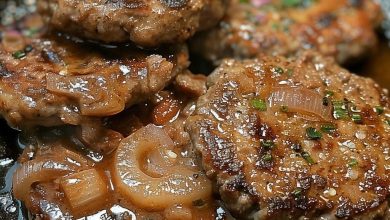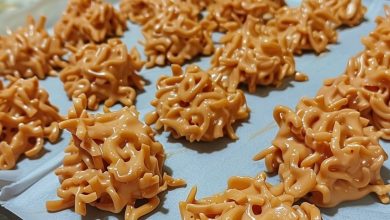
Please STOP boiling potatoes in WATER
Potatoes are a versatile staple in many cuisines worldwide. However, improper cooking methods can lead to soggy, flavorless results. To elevate your potato game and bring out their best texture and taste, try these superior cooking techniques.
ADVERTISEMENT
1. Steam Your Potatoes for Maximum Flavor and Nutrition
Why It Works:
Steaming cooks potatoes gently without submerging them in water, preserving their natural flavor and nutrients. Unlike boiling, which leaches out essential vitamins and minerals, steaming ensures that your potatoes remain nutrient-dense and delicious.
ADVERTISEMENT
How to Do It:
- Cut potatoes into evenly sized pieces (or leave small ones whole).
- Place them in a steamer basket over simmering water.
- Cover and steam for 15–20 minutes, or until fork-tender.
- Use steamed potatoes for mashed potatoes, potato salads, or casseroles.
2. Microwave for Quick and Easy Potatoes
Why It Works:
Microwaving is one of the fastest and most efficient ways to cook potatoes. This method helps retain the moisture and nutrients, making it an excellent choice when you’re short on time.
ADVERTISEMENT
How to Do It:
- Wash and prick whole potatoes with a fork to allow steam to escape.
- Place them on a microwave-safe plate.
- Cook on high for 5–8 minutes, turning halfway through.
- Perfect for making baked potatoes or crispy smashed potatoes.
3. Roast for Crispy, Caramelized Potatoes
Why It Works:
Roasting enhances the natural sugars in potatoes, creating a deep, rich flavor and crispy texture. It also allows you to infuse them with herbs, spices, and aromatics.
How to Do It:
- Preheat your oven to 400°F (200°C).
- Toss whole or chopped potatoes with olive oil, salt, pepper, and your favorite seasonings.
- Spread them evenly on a baking sheet.
- Roast for 30–45 minutes, flipping halfway through.
- Ideal for side dishes, grain bowls, or breakfast hash.
4. Cook in Broth or Cream for Ultimate Flavor
Why It Works:
Instead of boiling potatoes in plain water, simmering them in broth or cream infuses them with rich, deep flavors. This method creates luxurious mashed potatoes or enhances soups and stews.
How to Do It:
- Add diced potatoes to a saucepan with chicken, vegetable broth, or cream (enough to cover them).
- Simmer on medium heat until tender.
- Use the flavorful liquid to mash the potatoes for an extra creamy, delicious result.
5. Air Fry for the Crispiest Potatoes
Why It Works:
Air frying uses hot circulating air to give potatoes a crispy, golden exterior while keeping the inside soft and fluffy. This method achieves a deep-fried texture with less oil.
How to Do It:
- Toss diced or sliced potatoes with a small amount of oil and seasonings.
- Preheat the air fryer to 375°F (190°C).
- Cook for 15–20 minutes, shaking halfway through.
- Perfect for crispy home fries, fries, or bite-sized snacks.
6. Sauté for a Golden Brown Crust
Why It Works:
Sautéing potatoes in a hot skillet creates a crispy crust while keeping the insides soft. It also allows you to add garlic, onions, or fresh herbs for an extra burst of flavor.
How to Do It:
- Cut potatoes into small cubes or slices.
- Heat butter or oil in a skillet over medium-high heat.
- Add potatoes and cook for 10–15 minutes, stirring occasionally until golden brown.
- Season with salt, pepper, and fresh herbs.
7. Grill for Smoky, Charred Potatoes
Why It Works:
Grilling gives potatoes a smoky, slightly charred flavor, making them an excellent addition to barbecues and outdoor meals.
How to Do It:
- Parboil potatoes for 5 minutes to soften them.
- Toss with oil, salt, and spices.
- Grill over medium-high heat, turning occasionally until golden brown.
- Serve as a side dish or in grilled vegetable salads.
Bonus Tip: Salt Early for Maximum Flavor
If you choose to boil potatoes, do it right:
- Use heavily salted water – like seawater. This seasons the potatoes from the inside out.
- Boil them whole or in large chunks to reduce water absorption and keep them from becoming soggy.
- Drain well and let them rest for a few minutes before mashing or using them in recipes.




